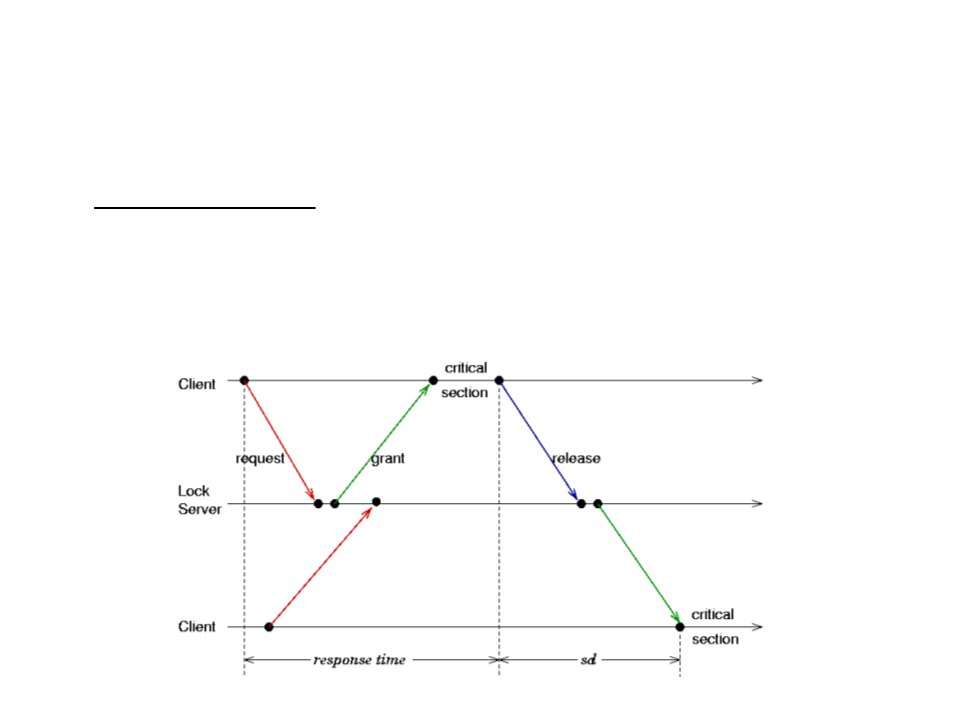
Distributed Programming
Lecture 01 - Introduction to Distributed Systems
and Distributed Programming
Edirlei Soares de Lima
<edirlei.lima@universidadeeuropeia.pt>

What is Distributed Programming?
•
•
Distributed computing is a field of
computer science that studies
distributed systems.
A distributed system is a system
whose components are located on
different networked computers,
which then communicate and
coordinate their actions by passing
messages to each other.
•
Distributed programming involves
the implementation of distributed
systems.

Distributed Programming – Concurrency
•
•
Process vs. Thread:
–
A process runs in its own address space (managed
by the OS), while a thread runs within the address
space of a single process and its managed by the
process.
Parallel vs. Concurrent:
–
Parallel refers usually to cases where two
computation are taking place physically
independently of each other (e.g.: in two different
machines, or in two different processors) while
concurrent is an abstraction that allows us to have
apparent parallelism even in the cases of one
processor.

Concurrent Programming
•
•
Main challenge: synchronize the execution of different
processes and enable them to communicate with each other.
Type of systems:
–
–
–
Multitasking System: concurrent execution of multiple processes in a
single CPU.
Multiprocessor Systems: parallel execution of multiple processes in
multiple CPUs.
Distributed Systems: parallel execution of multiple processes in
multiple computers connected through a network.

Multitasking Systems
•
•
Concurrency is based on interleaving
instructions from different processes
on a single CPU.
Multitasking does not require parallel
execution of multiple tasks at exactly
the same time; instead, it allows more
than one task to advance over a given
period of time.

Multiprocessor Systems
•
•
Parallelism is achieved by executing processes in multiple
CPUs on the same computer.
Each processor has access to both local memory and global
memory.

Distributed Systems
•
Parallelism is achieved by executing processes in multiple
computers that are connected through a network.

Distributed Systems – Examples
•
Web Services: WEB (HTTP), E-Mail (SMTP), VoIP, Instant
Messaging, …

Distributed Systems – Examples
•
Cloud Computing: Google Docs, Google Drive, Dropbox,
Amazon Web Services, …

Distributed Systems – Examples
•
MMORPGs: require fast response times and real-time
propagation of events.

Multiplayer Games – History
•
•
•
Empire (1973): turn-based strategy game
with support for networked multiplayer.
Maze War (1973): networked multiplayer
first-person shooter.
Both games were designed run on small
networks composed of mainframe
computers (PLATO system).

Multiplayer Games – History
•
Doom (1993) was the progenitor of the modern networked
games.
–
The first-person shooter supported up to four players in a single
game session (in a local area network – LAN), with the option to play
cooperatively or competitively.

Multiplayer Games – History
•
•
Quake (1996) allowed players to
connect to a server (which may be a
dedicated machine or on one of the
player's computers), where they
could either play cooperatively or
competitively.
Unreal (1998) followed the same
model of Quake with a multiplayer
mode that allowed up to 16 players
to play over the Internet.

Multiplayer Games – History
•
•
Ultima Online (1997) was one of
the first persistent MMORPGs.
EverQuest (1999) was the first
commercially successful MMORPG
to employ a three-dimensional
game engine.
•
World of Warcraft (2004) is one of
the most successful MMORPGs,
with a peak of 12 million
subscriptions in 2010.

Why are Distributed Systems Needed?
•
General access without location restrictions (e.g.: banking
network, games);
•
•
•
Sharing resources across many users (hardware and
software);
Load balancing (e.g.: distributing game players across many
servers instead of overloading a single server);
Fault tolerance (when a fraction of the processors fail, the
remaining processes can take over the tasks and keep the
application running);
•
Flexibility and adaptability by decomposing a global system
into smaller (and simpler) systems;

Distributed Systems – Challenges
•
•
Heterogeneity: hardware, operating systems, programming
languages, …
The knowledge of a process is local: no process is expected to
have global knowledge about either the network topology or
the global state.
•
•
•
Communication, cooperation and synchronization between
processes is done through message exchange.
The handling of failures is an important and complex part of a
distributed system.
Scalability: a distributed system is considered scalable when
its performance is not influenced by the final scale of the
system or the number of users.

Distributed Computing – Common Problems
•
Leader election: when a number of processes cooperate for
solving a problem, many implementations prefer to elect one
of them as the leader and the remaining processes as
followers. If the leader crashes, then one of the followers is
elected the leader.

Distributed Computing – Common Problems
•
Mutual exclusion: when the access to a resource or shared
data is critical, it is necessary to guarantee that only one
process will acquire the resource or perform critical
operations on a shared data at any time.

Distributed Computing – Common Problems
•
•
Multicasting: sending of a given data to multiple processes in
a distributed system is a common subtask in many
applications. As an example, in group communication, one
may want to send some breaking news to millions of
members as quickly as possible.
Replica management: to support fault tolerance and improve
system availability, the use of process replicas is quite
common. When the main server is down, one of the replica
servers replaces the main server.

Further Reading
•
•
Coulouris, G., Dollimore, J., Kindberg, T., Blair, G. (2004). Distributed
Systems: Concepts and Design (5th edition), Pearson.
ISBN: 978-0132143011.
–
Chapter 1: Characterization of Distributed Systems
Glazer, J., Madhav, S. (2015). Multiplayer Game Programming:
Architecting Networked Games. Addison-Wesley Professional.
ISBN: 978-0134034300.
–
Chapter 1: Overview of Networked Games
